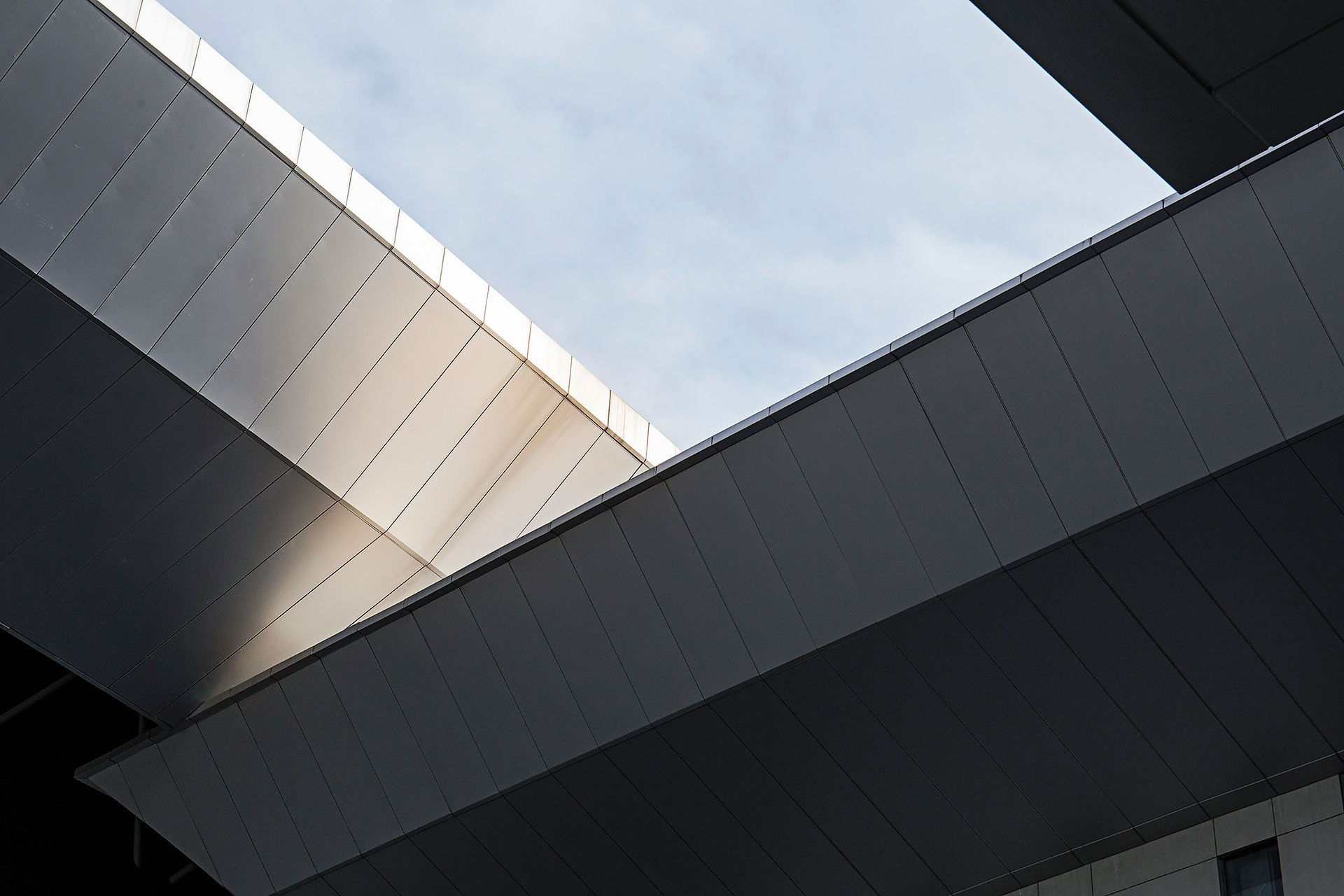High-performance building facades
- Architectural Engineering Consultants
- Jan 5, 2023
- 6 min read
A building may be designed with an intelligent system that learns how people interact with the space they live in and adapts itself accordingly. It might also be able to understand what types of materials are needed for each part of the building envelope.
In recent years, facade design has become increasingly important as an element of sustainable urban development because it can be used to reduce energy consumption in buildings while simultaneously improving their appearance without sacrificing comfort or functionality. The building facade are the interface between the indoor and outdoor environment, and it plays a critical role in a building's overall performance.

In recent years, there has been an increased focus on designing high-performance building facades. This is due in part to the fact that the facade can have a significant impact on a building's energy efficiency and comfort levels. When properly designed, a facade can minimize the need for mechanical systems, reduce energy consumption, and create a more comfortable indoor environment. There are many different approaches to designing a high-performance facade, and the most appropriate solution will vary depending on the specific needs of the project. However, some of the most popular strategies include using passive solar design principles, incorporating natural ventilation, and selecting materials with high thermal mass. As we continue to face the challenges of climate change, it's important that we explore all of the options for designing high-performance building facades. By doing so, we can create buildings that are more energy-efficient, comfortable, and sustainable.
The role of the building envelope
The role of the building envelope is to protect the interior of the building from the exterior environment. The envelope also serves to regulate the flow of heat, air, and moisture between the two environments. In order to be effective, the envelope must be durable, airtight, and weather-resistant. A well-designed building envelope will also take into account the climate in which the building is located. For example, in a hot and humid climate, the envelope should help to keep the interior of the building cool and dry. In a cold climate, the envelope should help to keep the interior warm. There are many different materials that can be used for the building envelope. Some of these include brick, stone, glass, metal, and wood. Each material has its own advantages and disadvantages. The choice of material for the envelope will depend on many factors including the climate, the location of the building, and the type of building. The design of the envelope will also need to take into account any special requirements such as fire resistance or sound insulation.
Building Skin as a Way to Better Integrate Passive Strategies
A building's skin is its first line of defense against the environmental elements. It's also a key factor in the building's energy efficiency. Integrating passive strategies into the design of a building's façade, can have a significant impact on the overall performance of the structure.
Building skin is a complex system that needs to be carefully considered in order to achieve optimal results. There are many factors to take into account, such as materials, climate, daylighting, and ventilation. By taking the time to understand all of these variables, as architects we can create more efficient and effective buildings. One of the most important aspects of designing an effective building skin is understanding how different materials interact with each other and with the environment. For example, choosing the right insulation can make a big difference in a building's energy consumption. In hot climates, reflective coatings can help keep a building cooler, while in cold climates, thermal mass materials can help retain heat. It's also important to consider how climate plays a role in determining the best design for a particular location. In areas with extreme temperatures, it may be necessary to use more sophisticated systems to maintain comfortable indoor conditions. For example, double-skin facades or active chilled beams can be used to regulate temperature and improve energy efficiency. By taking into account all of these variables, we can create high-performance building facades that are better able to withstand the rigors of nature and provide comfortable indoor conditions for occupants.

The Effect of Passive Strategies on Building Performance
Passive strategies are those that do not require active mechanical systems to function. They can include features such as thermal mass, insulation, solar orientation, and natural ventilation. When properly implemented, passive strategies can have a significant impact on a building's energy consumption.
One of the most important aspects of passive design is solar orientation. By orienting a building in such a way that it maximizes the amount of sunlight it receives, it can reduce the need for artificial lighting and heating. In cold climates, solar orientation can also help to prevent heat loss by keeping the sun from shining directly on the windows.
Another important aspect of passive design is thermal mass. This is the ability of a material to absorb and store heat energy. A high thermal mass material such as concrete can help to regulate indoor temperatures by absorbing heat during the day and releasing it at night. This can help to reduce the need for artificial heating and cooling systems.
Insulation is another key element of passive design. By preventing heat loss through the walls, ceiling, and floor, insulation helps to keep a building at a comfortable temperature without using excessive amounts of energy. Natural ventilation is another way to reduce a building's energy consumption. By taking advantage of prevailing winds and using strategically placed openings, natural ventilation can provide fresh air while also helping to cool the building in hot weather. When Passive Design Principles are integrated into the early stages of project development they have potential to create highly efficient buildings with reduced operating costs and greenhouse gas emissions.
The future of facade design and technology
The future of facade design and technology will be defined by a continued push towards energy efficiency and sustainability. Building skins will need to be more effective at regulating temperature, controlling solar gain, and managing water vapor. New materials and construction methods will be developed to meet these challenges. Active systems such as photovoltaics, solar thermal collectors, and natural ventilation will become more common as architects strive to create zero-energy buildings.

The impact of climate on facade design
As the world becomes increasingly urbanized, the design of buildings and their façades must adapt to changing climatic conditions. In hot and humid climates, for example, buildings must be designed to minimize solar heat gain and provide natural ventilation. In cold climates, attention must be paid to minimizing heat loss and maximizing solar gain.
The selection of materials for a facade is an important consideration in climate-responsive design. Materials with high thermal mass can help to regulate indoor temperature by absorbing and releasing heat. Insulating materials can help to reduce heat loss in cold climates, while materials with high solar reflectance can help to reduce heat gain in hot climates. Climate-responsive design also requires careful consideration of a building's orientation. In hot climates, south-facing facades should be shaded to prevent excessive solar gain. In cold climates, north-facing facades should be unshaded to maximize solar gain.
Active systems such as photovoltaics and solar thermal collectors can also be used to help mitigate the effects of climate change on buildings. These systems can provide power for heating, cooling, and lighting, and can also help to offset a building's carbon footprint.
As the impacts of climate change become more pronounced, it is clear that the design of buildings will need to adapt accordingly. By taking into account the unique challenges posed by different climate zones, architects can create more sustainable and resilient buildings.
What are some emerging trends in the design of high performance building facades?
Some emerging trends in the design of high performance building facades include the use of more energy-efficient materials, the incorporation of active systems such as solar panels and natural ventilation, and the development of new construction methods to improve thermal insulation.
One of the most important trends in high performance facade design is the move towards more energy-efficient materials. Insulation is becoming increasingly important as architects strive to create buildings that require less artificial heating and cooling. New insulation materials and methods are being developed all the time, such as aerogels, vacuum insulated panels, and phase change materials. These advanced materials can help to significantly reduce a building's energy consumption.

Another trend is the incorporation of active systems into building facades. Solar panels, solar thermal collectors, and natural ventilation are all becoming more common as architects look for ways to create zero-energy buildings. Active systems can help to offset a building's energy consumption by generating renewable electricity or providing free cooling and ventilation. Finally, new construction methods are being developed to improve thermal insulation. In order to meet the challenges of climate change, buildings need to be better at regulating temperature and managing solar gain. One way to achieve this is through the use of more thermally efficient construction methods, such as insulated Concrete Forms (ICFs) or Structural Insulated Panels (SIPs). These techniques can help to improve a building's overall energy performance.
For more information, contact Alessandro Mangano, partner at AEC to start a conversation about how our consulting services can support you.










Comments